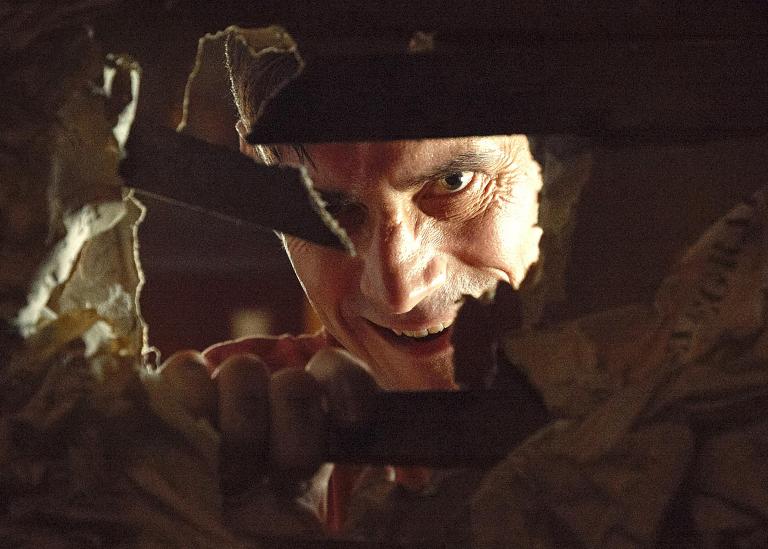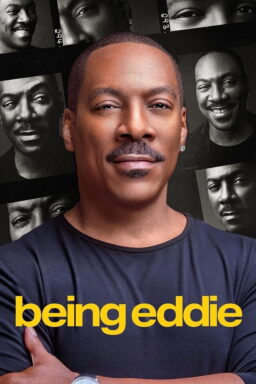The midnights at this year’s South by Southwest Film Festival have been a typically inconsistent mixed bag of quality. Part of the conversation seems to be the fact that the best horror movie of this year’s fest (and probably that you’ll see all year), “Us,” played as a headliner. Even today, I saw an odd horror-comedy hybrid (“Extra Ordinary,” which I’ll write about elsewhere) that feels like it could easily have been in the midnights. It leads one to question what it means to be a SXSW Midnighter. What personality does this program have? It’s been hard to discern this year, especially as the quality of the six films I’ve seen from it has been largely disappointing.
The best of the program is Travis Stevens’ “The Girl on the Third Floor,” a genre hybrid about a deeply flawed man who enters into one of the most terrifying home rehab projects in movie history. Stevens is an admired veteran of indie horror, producing respected films like “Cheap Thrills,” “Starry Eyes,” “We Are Still Here,” and “68 Kill.” He makes his directorial debut here, and his experience on indie horror sets for the last decade pays off with a confidence behind the camera that never betrays the fact that this is actually a debut.
Famous athlete C.M. Punk stars as Don Koch, a man who has recently bought an old home in need of a heavy rehab. He heads to the home ahead of his pregnant wife Liz (Trieste Kelly Dunn), and gets to work. It’s not just a big paint job. He’s got to deal with creepy black stuff oozing out of the walls and strange sounds in the middle of the night. And then he faces what seems like it could be the biggest issue with the rehab, a pretty local girl named Sarah. You see Don is the kind of guy pumping a lot of energy into rehabbing something physical because he’s unwilling to do the real rehab work on his deeply-flawed character. And that character is about to get him in serious trouble.
The first act of “Girl on the Third Floor” is deliberate enough that I actually thought I was experiencing a slow burn genre film not unlike, say, Ti West’s “House of the Devil,” in which we know something is going to go very, very wrong, but the filmmaker almost plays with that knowledge by delaying the payoff. This is not that movie. Without spoiling anything, “Third Floor” becomes something closer to Cronenberg with its icky body horror than anything West has made before.
C.M Punk proves to be an inspired casting choice as his athletic persona feeds into the narrative—Don seems like the kind of guy more likely to work out than deal with his problems at home—and he’s engaging enough as a lead to keep us interested in his fate. And Stevens gets a lot of mileage out of his creepy house, playing with doorways and staircases in a way that often keeps us as confused as Don. This won’t be for everyone, but it’s one of the few SXSW Midnighters this year that feels like a unique vision that satisfies from beginning to gory end. And it’s a reminder that you should always just hire a professional to do a tough job.

A house of horrors is also the setting of Richard Bates Jr.’s “Tone-Deaf,” starring Robert Patrick and “Silicon Valley”’s Amanda Crew. The director of “Trash Fire” has a way with films that, to put it politely, play with drastically different tones. While the title here refers to the fact that no one will tell our female protagonist that she can’t actually play the piano, I also think it’s a play on the fact that this film has a tonal thrashing that can create whiplash. “Tone-Deaf” goes from “interesting” to “messy” too quickly for my tastes. I could never figure out exactly what Bates was trying to accomplish here as the film doesn’t work as horror or comedy. It’s a purposefully exaggerated movie that the description claims is a “darkly comedic critique of the bizarre cultural and political climate that currently exists.” If you say so.
Crew plays Olive, a millennial who rarely leaves her L.A. bubble. She’s talked into doing so after losing her job and her boyfriend, and she heads off to a vacation home in the country, handed the keys by a seemingly kindly widower (Patrick), who we quickly learn is a total sociopath. He kills randomly and seems to enjoy doing so more with every murder. Picture an update to “American Psycho” in which Patrick Bateman has moved to rural America and hates these young whippersnappers with their iAddictions.
That last graf makes “Tone-Deaf” sound more fun than it actually is. Despite some decent work by Crew and Patrick, and Bates’ strong eye as a director, it’s all over the map—sometimes asking us to laugh at Patrick’s insanity and sometimes asking us to be scared of it. Gender commentary, class commentary, slasher horror, broad comedy, even family drama—none of the several films buried within “Tone-Deaf” work.

And yet I’d rather watch that kind of ambitious mess than the dull one that is the depressing “I See You,” a film I won’t say much about because I don’t take any joy from slamming independent cinema and my mom always taught me “if you don’t have anything nice to say … ”
A 12-year-old in a small town has gone missing and lead investigator Greg Harper (Jon Tenney) is on the case despite a rocky home life with his wife Jackie (Helen Hunt). The case looks like it could involve the return of a criminal thought to be gone forever, or at least a copycat, and, well, then “I See You” takes a sharp left turn and becomes something entirely different than what you think it is to start. And it’s not done turning.
“I See You” is like several movies in one, and none of them work. It’s an understatement to say that this film just gets more and more ridiculous in terms of plot twists that push on that suspension of disbelief until it breaks. It’s tempting to say that people like Hunt and Tenney deserve better, but this is also one of those projects that feels like it never worked, not even on the page. They should have seen what was coming.












